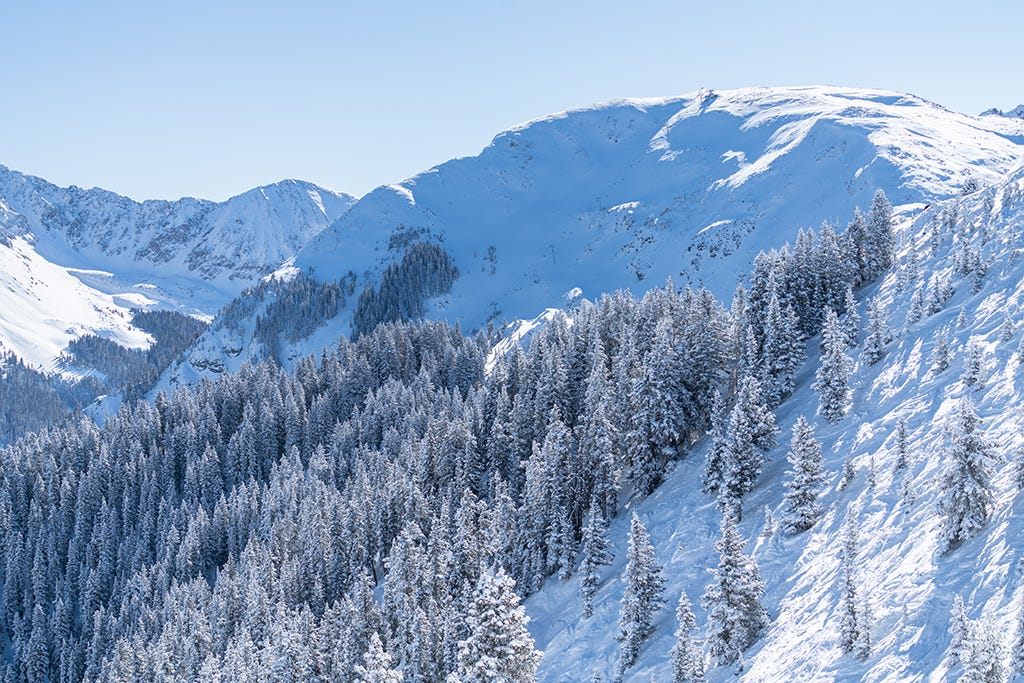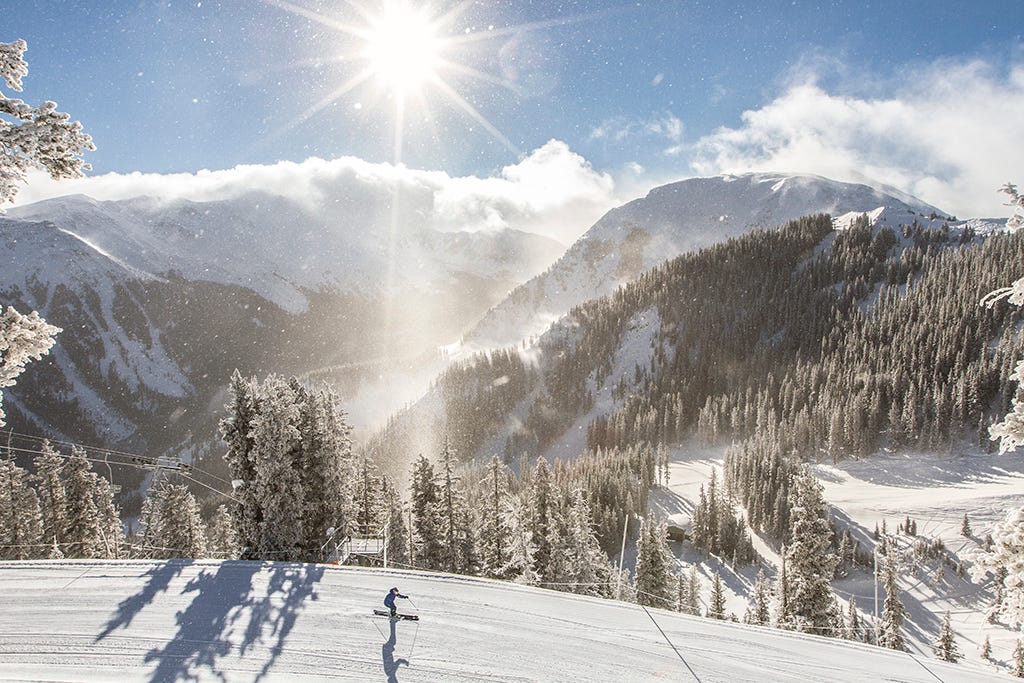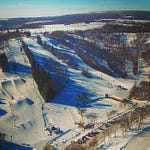The Storm Skiing Podcast is sponsored by Mountain Gazette - Listen to the podcast for discount codes on subscriptions and merch.
Who
David Norden, CEO of Taos Ski Valley, New Mexico
Recorded on
Sept. 13, 2021
Why I interviewed him
It’s a map dot perched improbably in the nation’s southwest pocket, in a state that evokes and largely is scrubland and desert. Seated at roughly the same latitude as Nashville, Tulsa, and Las Vegas, it seems impossible that there could be skiing there. But there’s skiing there. And not in the technology-overwhelming-nature way that there’s skiing in Maryland or New Jersey or Tennessee; this is big-mountain, serious stuff. Taos is one of the best ski areas in the country, floating 9,200 above sea level – at its base. The skiing is wild and intense, deep and meandering when the snow allows. Much of it requires hiking. It’s a bit remote, but that’s an asset – no I-70 approach-road messiness, no liftlines backed up to Utah. It’s also a place that, for much of the past three decades, seemed determined to stay frozen in time. Skier visits plunged from 350,000 in the 1990s to 160,000 by the 2005-06 season. That began changing in 2014, when billionaire Louis Bacon bought the joint and started emptying his money bin into new lifts, stringing a controversial triple up Kachina Peak and upgrading the legendary Lift 1 with the resort’s first high-speed detachable. Taos also became North America’s first ski resort to earn the coveted B-Corporation environmental ranking, and has been a leader in forest fire mitigation through a partnership with the Nature Conservancy and the U.S. Forest Service. But the renaissance is just getting moving: the mountain recently released a master plan that would modernize its entire lift fleet while preserving its existing trail footprint. I wanted to get a sense of where the mountain was headed and how it planned to get there, and the man running the show seemed like the best place to start.

What we talked about
How the mighty Taos of the 1990s lost its swagger; the legacy of mountain founder Ernie Blake and his family; why they finally sold the resort in 2014 and why they chose Louis Bacon as the buyer; Taos’ environmental focus and B-Corporation status; the initial controversy over the Kachina triple and how sentiment has evolved over time; how the resort manages that intense high-altitude terrain; subtle tricks to keep the blue-square crowd off that lift; reaction to replacing Lift 1 with a high-speed detach, the mountain’s first; managing crowding over the long-term; why the resort overhauled its beginner area with new lifts and progressive graded terrain; easing the trauma of ski-school drop-off; what Taos’ extensive glading efforts have to do with fire mitigation and water quality; where those efforts have been focused this summer; Taos’ master development plan; where the resort wants to put a gondola and how that would transform the resort; creating a clean-energy transportation system from the town of Taos up to the resort; whether lifts 2 and 4 will be replaced with high-speed lifts; potential upgrades for lift 7 and why lift 7A may stay exactly as it is; potential upgrades for lift 8; when we could start seeing some of these new lifts in a best-case scenario; why local support is so key to resort upgrades; the fate of the once-proposed West Basin lift; the future of snowmaking at Taos; the high, dry, north-facing snow-retention miracle that is Taos Ski Valley; why Taos joined the Ikon Pass and why the locals haven’t pushed back as they have at other Western destinations; why the mountain never intends to return to its mid-90s heyday of 350,000 annual skier visits; the 2019 inbounds avalanche and how the mountain is moving ahead from that incident; how Taos honored the two skiers killed that day; prepping for another potential season in the midst of Covid; and working with the state to forestall a return to on-mountain capacity and 14-day quarantines.
Why I thought now was a good time for this interview
Taos is deep enough into its turnaround to know that it’s working, but has enough ambition ahead that it hasn’t yet fully become what it will be. And what it will be is a pacesetter for how a major ski resort will need to operate in a world that is increasingly conservation-oriented, environmentally attuned, and gun-shy on development. And in a West now-annually scorched by massive wildfires, Taos is also modeling how to fortify all that expensive infrastructure against a rogue inferno. In the end, Taos will be about as close to a model modern ski resort as you’re going to find in America. With momentum behind the master plan and no question about whether funds will be available to make it happen, this seemed like a good time to take stock before the work really accelerates.
Questions I wish I’d asked
Taos, interestingly, was the last ski area in the United States that lifted its snowboard ban (three, of course, still ban snowboards). That happened in 2007, before Bacon bought it and before Norden’s time, but it still would have been an interesting discussion point. Norden also brought up a really cool concept for a clean-transportation energy system starting with electric buses departing from the town of Taos and leading all the way up the mountain, and I would have liked to have gotten into that a bit more. I also wanted to ask about Taos Air, the only commercial airline, as far as I’m aware, that’s run by a ski resort. Next time.
Why you should ski Taos
Well it’s on the Ikon Pass, first of all, and if you’re reading this, there’s a good chance you already have one. Facebook posts soliciting destination suggestions often read something like, “Hey me and my nine friends are taking a trip in December and we’re looking for a place that gets nine feet of powder per week and where you can stay slopeside for less than $4 per day, and we want to fall out of the back of the plane and land on the chairlift.” The comments section inevitably leads these bargain hunters to Utah, Colorado, or Tahoe. No one ever mentions poor Taos. Good. This is one of the last uncluttered alpha dogs in American skiing, a place with all the mystique of Jackson or Little Cottonwood Canyon, but very little of the boozy chaos. And with the overhauled beginner zone hard by the base area, Toas now caters to families in a way it wasn’t able to in the past. Go out of your way for this one. It’s worth it.
Additional Resources
This New York Times article is an excellent overview of Taos’ evolution under Bacon.
Lift Blog’s inventory of Taos lifts
Historic Taos trailmaps
2019 avalanche
An analysis by veteran ski writer Marc Peruzzi of the 2019 inbounds avalanche at Taos that killed two skiers.
The families of each of those skiers has set up foundations in their honor. Click through below to donate to each:
Live Like Z, set up in honor of 26-year-old Matthew Zonghetti, provides scholarships to graduates of Mansfield Massachusetts High School.
Corey’s Foundation, set up in honor of 22-year-old Corey Borg Massanari, provides outdoor safety gear and training for schools, nonprofits, and ski resorts.
This video of Borg Massanari’s Organ Donors Walk of Honor through the halls of the University of New Mexico Hospital is both devastatingly sad and uplifting.
Taos named runs after each of the deceased skiers – the only inbounds avalanche victims in the resort’s history. The runs – “She Gone” for Borg Massanari and “Z-Chute” for Zonghetti, run off Highline Ridge and are listed on the resort’s trail-status page, but do not appear on the most recent trailmap.
















Podcast #53: Taos Ski Valley CEO David Norden